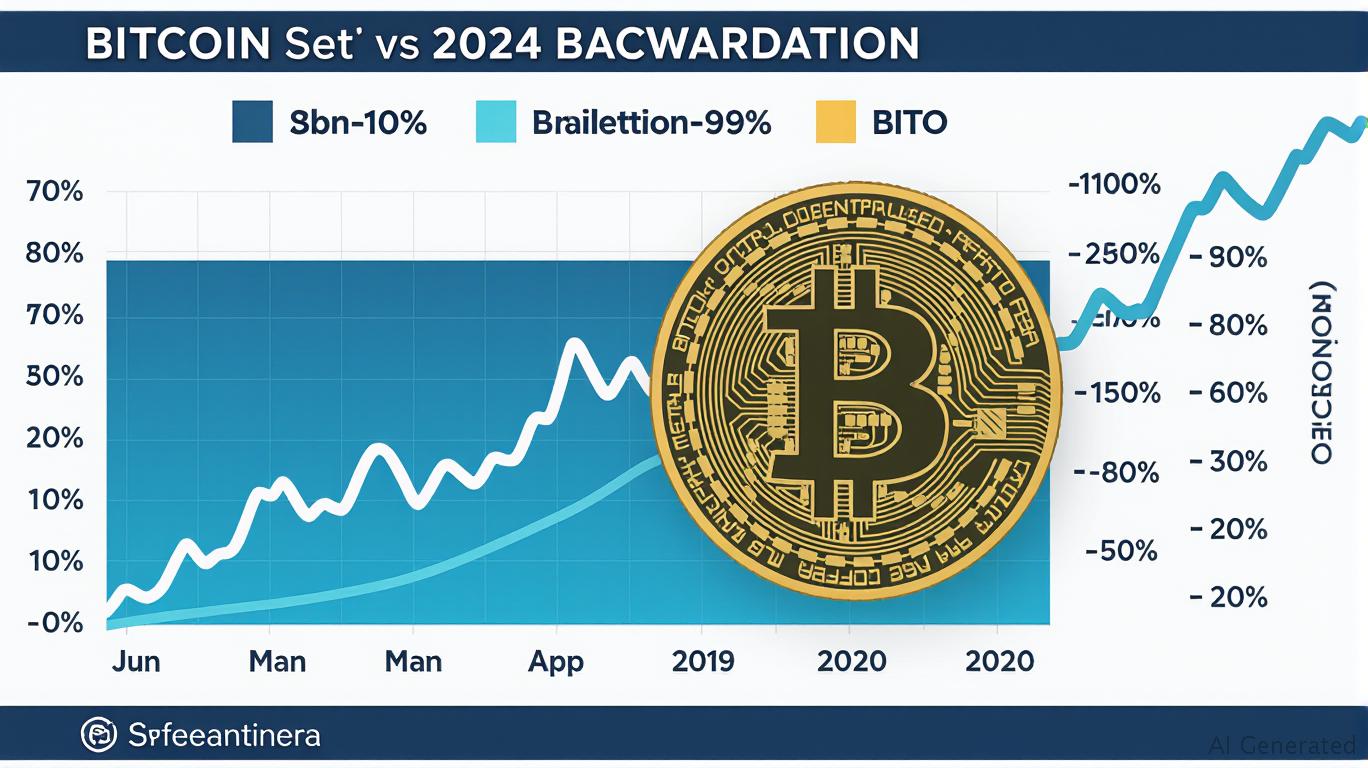BITO: Navigating Bitcoin's Contango Conundrum Through Active Futures Management
The
market has long grappled with the persistent specter of contango—a market structure where futures contracts trade at a premium to the spot price. For investors seeking exposure, this phenomenon creates a dilemma: holding physical Bitcoin avoids roll decay but demands custody solutions, while futures-based ETFs like the ProShares Bitcoin Strategy ETF (BITO) face systematic underperformance in contango. Yet, BITO's active futures management offers a nuanced solution. By strategically rolling contracts, mitigates prolonged contango risks, positioning it as a complementary tool in portfolios that already hold spot Bitcoin. Here's why.The Contango Conundrum and Its Impact on Investors
Contango in Bitcoin futures markets occurs when traders demand a premium for holding Bitcoin over time, often due to storage costs, volatility expectations, or regulatory uncertainty. This creates a “roll decay” problem for futures-based products like BITO: when contracts are rolled from expiring near-month contracts to longer-dated ones, investors effectively sell at a lower spot price and buy at a higher futures price. Over time, this decay can erode returns, even if Bitcoin's spot price remains stagnant or grows slowly.
Spot Bitcoin ETFs like
iShares Bitcoin Trust (IBIT), which hold physical Bitcoin, sidestep this issue entirely. Yet, BITO's active management provides an alternative pathway—one that, while imperfect, may offer benefits in specific market conditions.BITO's Active Futures Strategy: A Double-Edged Sword
BITO's rolling process is its defining feature. By dynamically adjusting exposure to Bitcoin futures contracts, the ETF aims to maintain continuous market access. However, this strategy carries two critical trade-offs:
Roll Decay Risk: In persistent contango, BITO underperforms the spot price. For instance, during the 2023 sideways market, Bitcoin's spot price rose just 5%, but BITO lagged due to cumulative roll decay.
Active Management Flexibility: BITO's rolling discipline allows it to navigate contango by favoring contracts with narrower premiums or anticipating backwardation (when futures trade at a discount to spot). In such periods, BITO's returns can outpace the spot price, as seen during brief backwardation episodes in 2024.
Why BITO Shines in Sideways Markets: A Cost-Benefit Analysis
While spot ETFs dominate in rising markets, BITO's edge emerges in sideways environments. Consider a portfolio holding both:
- Risk Mitigation: In prolonged contango, BITO's roll decay is a known cost, whereas holding only spot Bitcoin may leave investors exposed to stagnation or regulatory shifts.
- Liquidity and Accessibility: BITO's ETF structure offers institutional-grade liquidity and tax advantages over direct Bitcoin ownership, making it a practical hedge for investors who prioritize ease of trading.
- Dynamic Exposure: By rebalancing between BITO and spot ETFs, investors can capitalize on contango reversals. For example, during backwardation periods, BITO's returns surge relative to spot, as seen in the chart below.

The Trade-Off: Fees vs. Strategic Flexibility
BITO's 0.95% expense ratio is nearly four times that of IBIT's 0.25%. Yet, for investors willing to pay this premium, BITO's role as a contango hedge can justify the cost, especially in portfolios where:
- Diversification is Key: Pairing BITO with spot Bitcoin reduces reliance on timing the market's contango cycles.
- Regulatory Risk is a Concern: BITO's SEC-approved structure offers compliance advantages over unregulated alternatives like the Grayscale Bitcoin Trust (GBTC), which trades at a persistent discount to NAV.
Conclusion: BITO as a Strategic Portfolio Tool
BITO is not a standalone Bitcoin investment—it's a tactical supplement. Its active futures management shines in sideways markets, where contango decay is inevitable for spot holders and opportunities for roll yield exist. While higher fees and structural risks limit its appeal as a core holding, BITO's ability to navigate contango makes it a valuable hedge for investors already exposed to spot Bitcoin.
For those building a Bitcoin portfolio, the calculus is clear: hold spot for long-term appreciation, but deploy BITO to manage contango risk and capitalize on market dynamics. Just as a diversified portfolio balances growth and safety, BITO's strategic role lies in its flexibility—a cost-effective hedge against the Bitcoin market's most stubborn structural headwind.

Comments
No comments yet